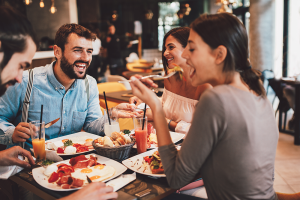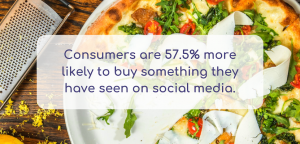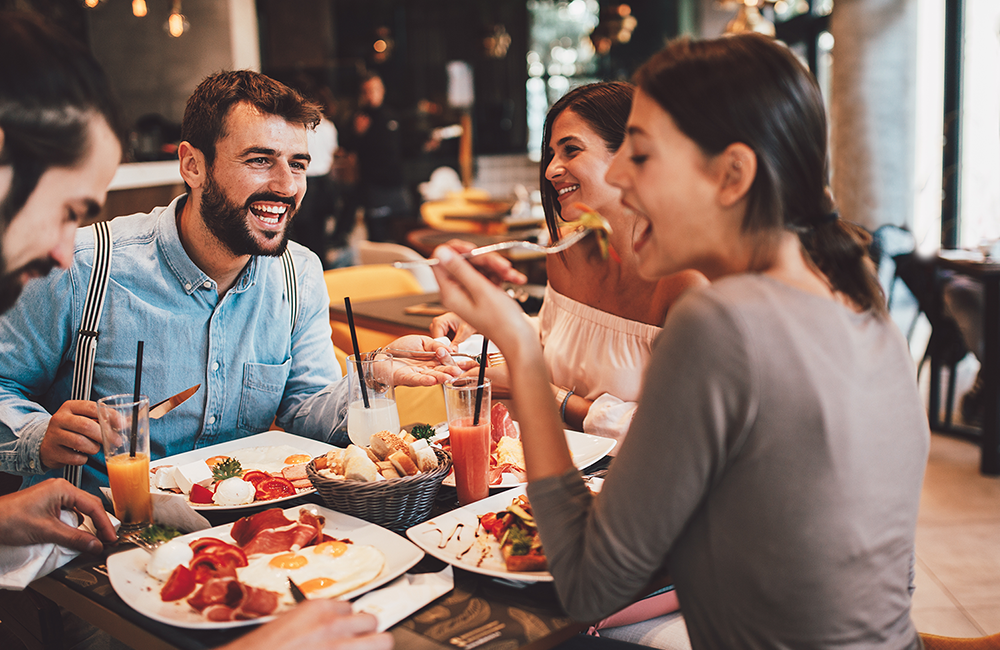In the competitive world of restaurants, success isn’t just about serving delicious meals; it’s about effectively reaching your audience. Pop-up Restaurant Marketing Agencies like Pop Up Media play a pivotal role in shaping a restaurant’s image, attracting customers, and ultimately impacting its revenue. Amidst various marketing strategies, Popup Marketing stands out as a dynamic agency that can significantly influence a restaurant’s success.
Popup Marketing provides an impactful Digital Marketing strategy that creates buzz and excitement around a brand or business. The folks at Pop Up Marketing Media, known as the top-notch digital marketing crew in Melbourne, highlight how they care for a business just like it’s their own. For restaurants seeking to boost revenue, Popup Marketing offers several key advantages:
Benefits of Popup Marketing for Restaurants
Creating a buzz and increasing brand visibility –
At Pop Up Media, we’re all about making waves and getting your brand noticed. Our goal is to boost your visibility and create excitement around your business. Whether it’s through innovative campaigns, eye-catching content, or strategic events, we’re dedicated to putting your brand in the spotlight. When people talk about buzz, we’re here to make sure your brand is at the centre of the conversation.

Leveraging limited-time offers to drive sales –
Here at Pop Up Media, we believe in the power of limited-time offers to supercharge your sales. Creating a sense of urgency with exclusive deals and time-limited promotions can drive customer interest and boost sales. By crafting exciting offers for a limited period, we help businesses attract more customers and encourage quick action, resulting in increased revenue within a short timeframe. These limited-time offers are a surefire way to create excitement and drive sales for your business.
Engaging customers with unique experiences-
Immersive Ambiance and Design: Design your restaurant space to evoke a specific mood or theme that resonates with your brand and target audience. Whether it’s cozy and intimate or vibrant and lively, the ambiance sets the stage for a unique experience.
Themed Dining Events: Host themed nights or special events that go beyond the regular menu. Whether it’s a cultural celebration, a seasonal festival, or a themed dining experience, these events offer customers something out of the ordinary.
Interactive Elements that Engage Senses: Incorporate interactive elements that engage customers’ senses. It could be live cooking stations, DIY plating, or interactive displays that involve customers in the dining experience.
Surprise and Delight: Surprise customers with unexpected gestures, such as complimentary tastings, secret menu items, or personalized recommendations. These little touches can create moments that customers remember.
Technology Integration: Utilize technology to enhance experiences. This could involve interactive menus, digital displays showcasing culinary journeys, or even augmented reality experiences related to the cuisine.
Community Engagement, Connect Locally: Engage with the local community through events, collaborations with nearby businesses, or initiatives supporting local causes. Community involvement can create a sense of belonging and elevate the overall experience.
Consistent Quality and Service: While focusing on uniqueness, ensure consistent quality in both food and service. Exceptional service paired with a memorable experience ensures customers return for more than just the novelty.
Soliciting and Implementing Feedback, Listen and Adapt: Encourage feedback from customers and use it to refine and improve the experiential elements. Continuously evolve based on what resonates best with your audience.
By focusing on creating unique, immersive, and memorable experiences, restaurants can elevate themselves from mere dining destinations to places where customers forge lasting connections and return for the experiences they cherish. It’s about going beyond serving a meal—it’s about crafting moments that customers savor and share, ensuring they keep coming back for more.
Case Studies: Successful Implementations
Strategies employed and their impact on revenue –
Real-life success stories of restaurants that have experienced significant revenue boosts through Popup Marketing shed light on the practical application of this strategy. Examining these cases provides valuable lessons for aspiring restaurateurs. Case studies illustrate how specific strategies, whether focusing on online engagement, menu design, or event-based marketing, can substantially impact a restaurant’s revenue. By strategically implementing these approaches, some establishments saw immediate sales increases and set the stage for ongoing growth and customer retention.

Navigating Challenges in Popup Marketing
Pop-up restaurant marketing agency brings a wave of excitement and innovation to restaurants, but it’s not without its challenges. Let’s explore common concerns and obstacles, along with effective solutions for ensuring successful campaigns:
Logistical Hurdles
Challenge: Securing suitable venues and setting up temporary spaces can pose logistical challenges, leading to delays or unsuitable locations.
Solution: Plan well in advance and scout potential venues early. Build partnerships with local businesses or utilize available community spaces. Invest in portable setups to ensure flexibility and ease of installation.
Limited Timeframe: Short Marketing Window
Challenge: The short duration of Popup events limits marketing timeframes, making it challenging to reach and engage the audience effectively.
Solution: Create teaser campaigns ahead of the Popup, leveraging social media and email marketing. Focus on concise, impactful messaging to create urgency and anticipation. Utilize influencers or collaborators to amplify reach within a short timeframe.
Customer Awareness and Attendance
Challenge: Generating awareness and ensuring attendance during a brief Popup period can be tough, leading to lower-than-expected foot traffic.
Solution: Implement a multi-channel marketing approach, combining online and offline strategies. Use targeted advertising, local promotions, and community engagement to spread the word. Offer incentives like early-bird discounts or exclusive deals to incentivize attendance.
Maintaining Consistency and Quality
Challenge: Maintaining consistent quality, service, and experience during Popup events might be challenging, especially with a different setup or temporary staff.
Solution: Prioritize staff training to ensure consistency in service and product quality. Standardize processes and communicate brand standards. Consider smaller, focused menus to maintain quality while offering a unique experience.
Crafting an Effective Popup Restaurant Marketing Campaign
Planning and executing a Popup Marketing campaign requires careful consideration and strategic thinking. This section provides a step-by-step guide, offering insights into creating impactful campaigns that resonate with the target audience. Here’s a step-by-step guide to help navigate the process and create a compelling campaign that captures your audience’s attention
Define Clear Objectives
Identify Goals: Determine what you aim to achieve with the Popup event. Whether it’s increasing brand awareness, driving sales, or testing a new market, defining clear objectives sets the foundation for the entire campaign.
Know Your Audience
Audience Research: Understand your target audience—their preferences, behaviours, and interests. This insight helps tailor the Popup experience to resonate with their expectations and desires.
Create Compelling Messaging
Craft Engaging Content: Develop a compelling narrative that communicates the uniqueness of the Popup event. From catchy taglines to visually appealing graphics, ensure that your messaging resonates with your audience and creates anticipation.
Strategic Timing
Timing is Key: Choose dates and times strategically. Consider factors such as local events, holidays, and your audience’s availability to maximize attendance.
Marketing and Promotion
Multi-Channel Approach: Employ a mix of marketing channels for your restaurant marketing like social media marketing, email campaigns, local advertising, and partnerships to promote the event. Utilize influencers or collaborators to extend reach and generate buzz.
Create an Engaging Experience
Curate Unique Experiences: Design an experience that sets your Popup apart. Whether it’s interactive elements, themed decor, live entertainment, or exclusive offerings, create an immersive experience that leaves a lasting impression.
By following these steps and customizing your approach based on your brand’s identity and audience preferences, you can craft an impactful Popup Marketing campaign that not only attracts attention but also drives engagement and fosters long-term customer relationships. The key lies in meticulous planning, creative execution, and a deep understanding of your audience’s needs and desires.
Conclusion
Popup Marketing has emerged as a game-changer in the restaurant industry, revolutionizing traditional marketing approaches. Its adaptability, innovation, and ability to create buzz have transformed how restaurants engage with their audience, ultimately driving revenue. This dynamic strategy isn’t limited by the size of the establishment; it caters to small eateries and renowned chains alike. Its flexibility allows restaurants to experiment, showcase creativity, and forge deeper connections with their customers.
By leveraging Popup Marketing, restaurants can break away from the norm, offering unique experiences that captivate audiences and set themselves apart in the competitive landscape.
5 Unique FAQs About Popup Marketing for Restaurants
- Is Popup Marketing suitable for all types of restaurants?
Popup Marketing can be adapted to various restaurant sizes and styles. It’s essential to tailor campaigns based on the unique characteristics and goals of each establishment.
- How can I measure the success of a pop-up marketing campaign?
Success metrics vary but may include increased foot traffic, social media engagement, and revenue growth. Utilize analytics tools and customer feedback to gauge the impact.
- Are there any common challenges associated with Popup Marketing?
Challenges may include logistical issues, customer perception, and competition. Addressing these challenges with strategic planning is crucial for a successful campaign.
- Can Popup Marketing be combined with traditional marketing strategies?
Absolutely! Popup Marketing can complement traditional strategies, creating a comprehensive approach to restaurant promotion that reaches a wider audience.
- What role do digital platforms play in Popup Marketing?
Digital platforms, including social media and online channels, play a significant role in amplifying





